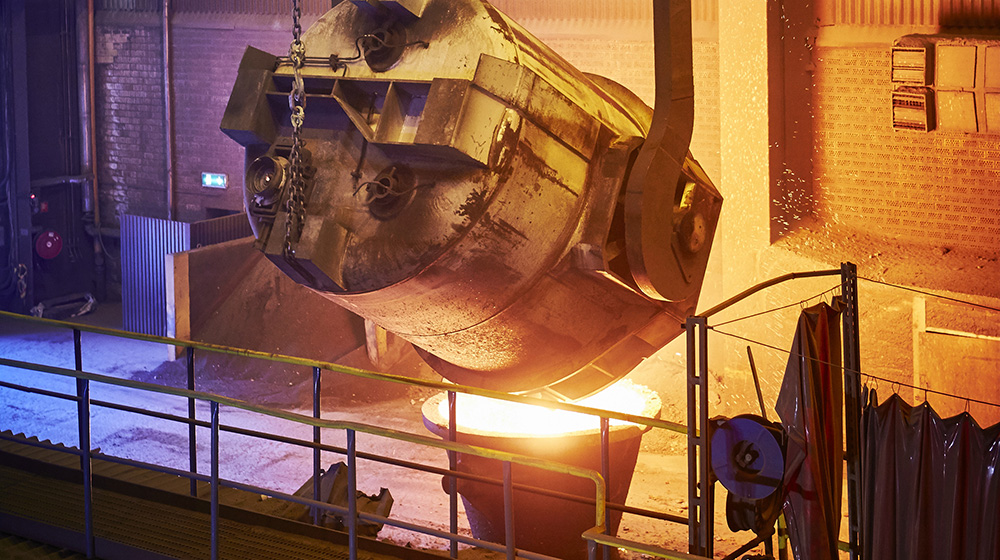Stainless-steel slag treat acidic wastewater

Slag from stainless-steel can substitute the use of lime to neutralise industrial acidic wastewater. This way part of the CO2 emissions derived by the extraction and processing of lime can be avoided, while reducing landfilling for stainless-steel producers.
How can a steel plant take advantage of its residual products and think more circularly? Researcher Mattia De Colle has cooperated with the steel companies Outokumpu Stainless and Sandvik Materials Technology to find new uses of stainless-steel slag to increase their recycling rate.
Millions of tons of slag are produced yearly in Europe alone, and unless properly recycled, they are stored in giant piles just outside the steel factories. Depending on the type of slag, it’s often recycled in various applications both internally at the plants and externally. Slag is for the most part used as a component in construction materials, like concrete or road pavements, thanks to its suitable mechanical properties.

Contains toxic elements
But slag from stainless-steel production contains a high percentage of cancerogenic elements like Ni or Cr, metals that easily solves and are released into the environment. That’s why most of the stainless-steel slag produced is currently landfilled.
“This kind of materials are the most problematic slag to recycle, as most are not viable for most of the state-of-the-art applications. And if the local authorities do not allow for the opening of new landfills, there are not many solutions left for stainless-steel producers,” says Mattia De Colle.
But the residual slag is alkaline. Which means that it could replace the lime that is used today to neutralize the steel industry's acidic wastewater.
Lime is cheap and produced by the calcination of limestone – a process that produces a lot of CO2. Due to its low cost, lime also must be mined locally, otherwise the cost of transportation would make the price of the material skyrocket, De Colle explains.

“This is also a problem because in western countries, where the environmental protection is becoming very important, mining permits are not getting renewed. This means that even if the material is abundant, new mines can’t be opened. This is also an opportunity for the lime industry to decouple from its extractive business.”
As good as lime
Dissolving slag in acidic wastewaters, thus releasing its cancerogenic elements might appear contradictory at first, but when the pH level of the solution is raised high enough these elements precipitates as solids and are not released into the environment. In addition, the industrial wastewater treated also contains high level of metallic elements, which are usually removed with the use of lime.
“When we compared the quantity of metals present in the waters after the treatment, we found no difference between using lime and slag. Overall, the substitution of lime with stainless-steel slags is proved to be successful both in terms of the obtained final pH values as well as in obtaining an efficient removal of metal ions dissolved in waters. Although, the use of slag to treat acidic wastewaters cannot be confined to the ones produced by stainless-steel producers only, because the amount of slag produced far exceeds the total lime substituted for this application. Future research needs to look outside the steel production and connect with relevant industrial partners to increase the volumes where slag can be used as a suitable reagent.”
Text: Anna Gullers
See a short video on LinkedIn
